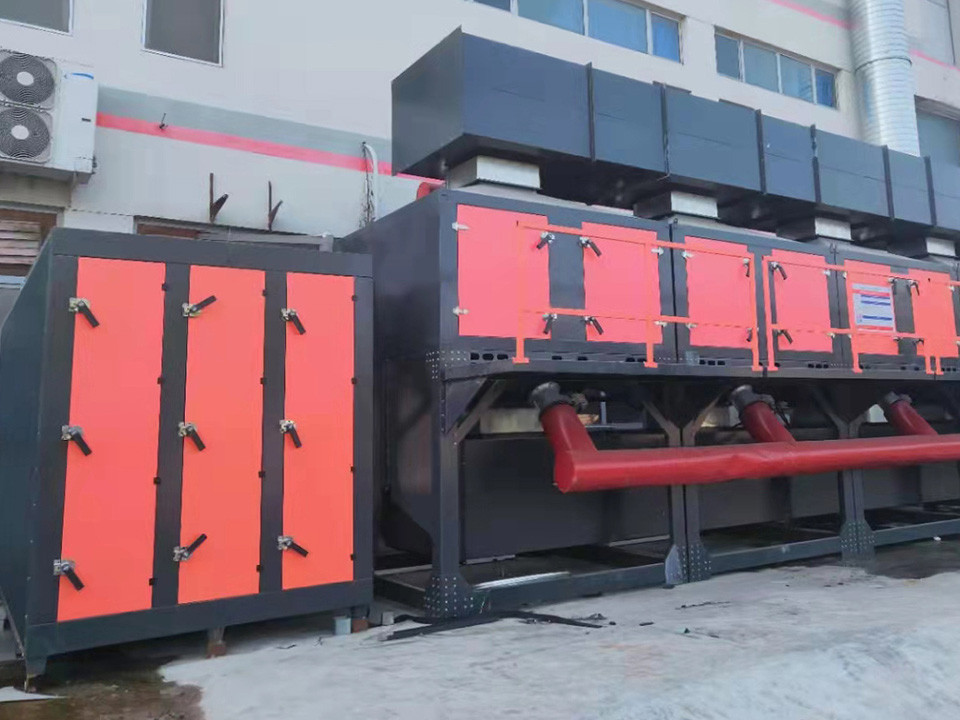
上一张
下一张
 Email:
jschaori@outlook.com
Email:
jschaori@outlook.com
 Whatsapp:
19714819527
Whatsapp:
19714819527
RTO (Regenerative Thermal Oxidizer, referred to as RTO), regenerative thermal oxidizer, is a kind of efficient organic waste gas treatment equipment. The principle is to oxidize the combustible waste gas into the corresponding oxide and water at high temperature, so as to purify the waste gas, and recover the heat released when the waste gas is decomposed, the waste gas decomposition efficiency reaches more than 99%, and the heat recovery efficiency reaches more than 95%. The main structure of RTO is composed of combustion chamber, ceramic packing bed and switching valve. According to the actual needs of customers, choose different heat recovery methods and switching valve methods.
The regenerative incinerator uses thermal oxidation method to treat the low and medium concentration of organic waste gas, and uses ceramic regenerative bed heat exchanger to recover heat. It is composed of ceramic heat storage bed, automatic control valve, combustion chamber and control system. Its main features are as follows: the automatic control valve at the bottom of the regenerator bed is connected to the intake manifold and the exhaust manifold respectively, and the regenerator bed is alternately reversed through the reversing valve to retain the heat of the high temperature gas coming out of the combustion chamber and preheat the organic waste gas entering the regenerator bed; Ceramic heat storage material is used to absorb and release heat; The organic waste gas preheated to a certain temperature (≥ 760℃) is oxidized in the combustion chamber to generate carbon dioxide and water, and is purified.
The typical two-bed RTO main structure consists of a combustion chamber, two ceramic packing beds and four switching valves. The regenerative ceramic filled bed heat exchanger in the device can recover the heat energy to the maximum extent, and the heat recovery rate is greater than 95%. VOC is handled with little or no fuel.
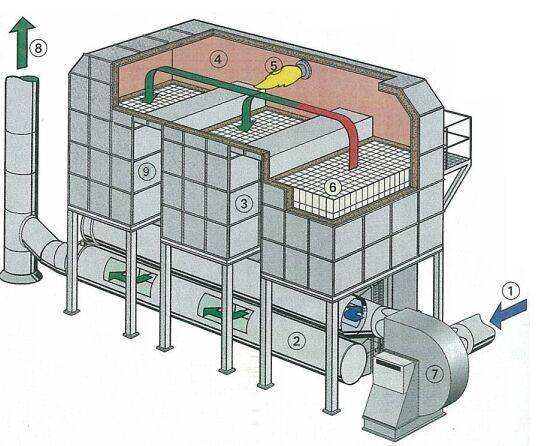
1, applicable organic waste gas types: paraffin, olefins, alcohols, ketones, ethers, esters, aromatics, benzene and other hydrocarbon organic waste gas;
2, low concentration of organic matter (while meeting less than 25%LFL), large air volume;
3, the waste gas contains a variety of organic components, or organic components often change;
4, containing waste gas that is easy to poison the catalyst or decline the activity of ingredients.
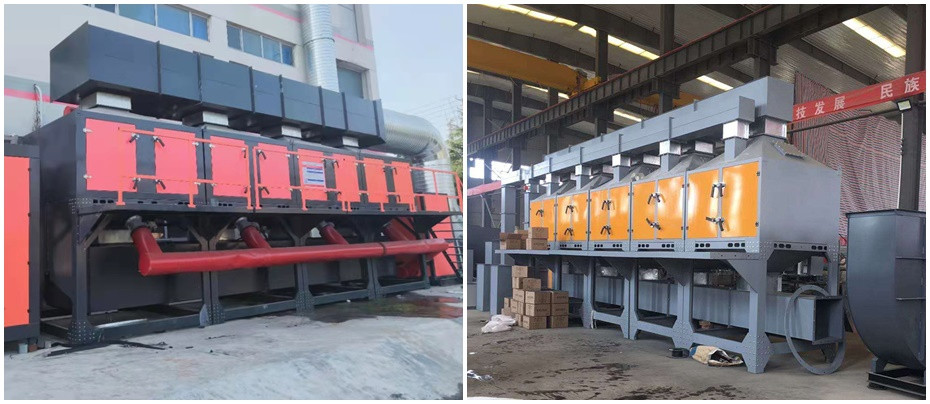
1. Passed ISO9001, ISO14001 and OHSA18001 certification.
2. Excellent R & D team, obtained a number of patent designs for incinerators and energy saving
3, modular design, and can be designed according to customer needs.
4, the incinerator burner has a flameless design, the load reduction ratio can reach 1~100%.
5, with rich experience in factory operation.
6, excellent service team, provide safety assessment, functional calculation, static pressure balance, operating costs, etc
7, with six safety chain control: system pressure monitoring, incinerator fan abnormal protection, combustion fan abnormal protection, flame signal monitoring, gas high and low pressure protection, incinerator high temperature emergency emptying protection.
8, system automatic control, one-click start, simple operation, and can be matched with man-machine interface to monitor important data.
9, with the whole plant system integration ability, including system installation, test, system operation, compliance with local regulations testing, equipment maintenance and education training.
10, excellent maintenance technical team.
11. System safety Instructions & System operation.
12. System safety interlocking protection: confirm that the operating points of the system are in line with the normal operating conditions (normal operating parameters). If they are not in line with the normal operating range, the system will import the warning mode or shutdown mode, including the following categories: high temperature alarm fault, equipment warning/shutdown fault, normal shutdown fault, emergency shutdown fault, etc.
13, system monitoring function: to understand the actual operating conditions of each operating point of the system, including system process status, damper start-up status, the actual operating temperature of each equipment/process and the differential pressure/pressure value of each main equipment.
14, touch man-machine interface: high maintenance convenience.
15, history records: for the system failure and troubleshooting history records, in order to facilitate the subsequent adjustment of the system, must increase the stability of its system.
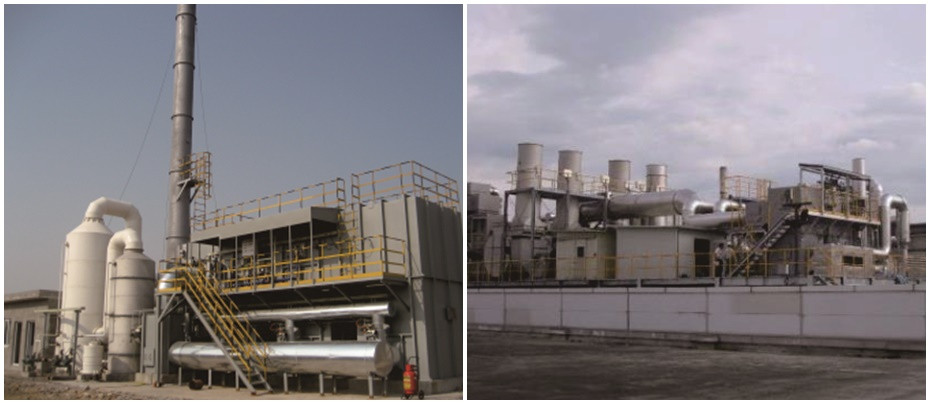
Low operating costs, ultra-low fuel costs.
When the concentration of organic exhaust gas is above 450PPM, the RTO device does not need to add auxiliary fuel.
High purification rate.
The two-bed RTO purification rate is above 98%, and the three-bed RTO purification rate is above 99%.
No secondary pollution such as NOX.
Automatic control, simple operation.
High safety, long service life, easy maintenance.
Low operating cost, reasonable cost performance.
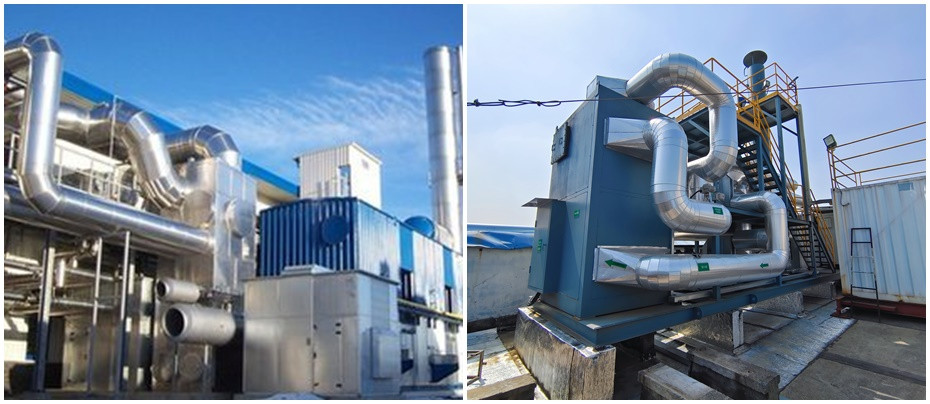
Petroleum and chemical industries (e.g. plastics, rubber, synthetic fibers, organic chemicals); Paint production and spray painting; Printing (including printing iron, printing paper, printing plastic); Electronic components and wires; Pesticides and dyes; Medicine; Picture tube, film, tape, etc.
 Related Products
Related Products
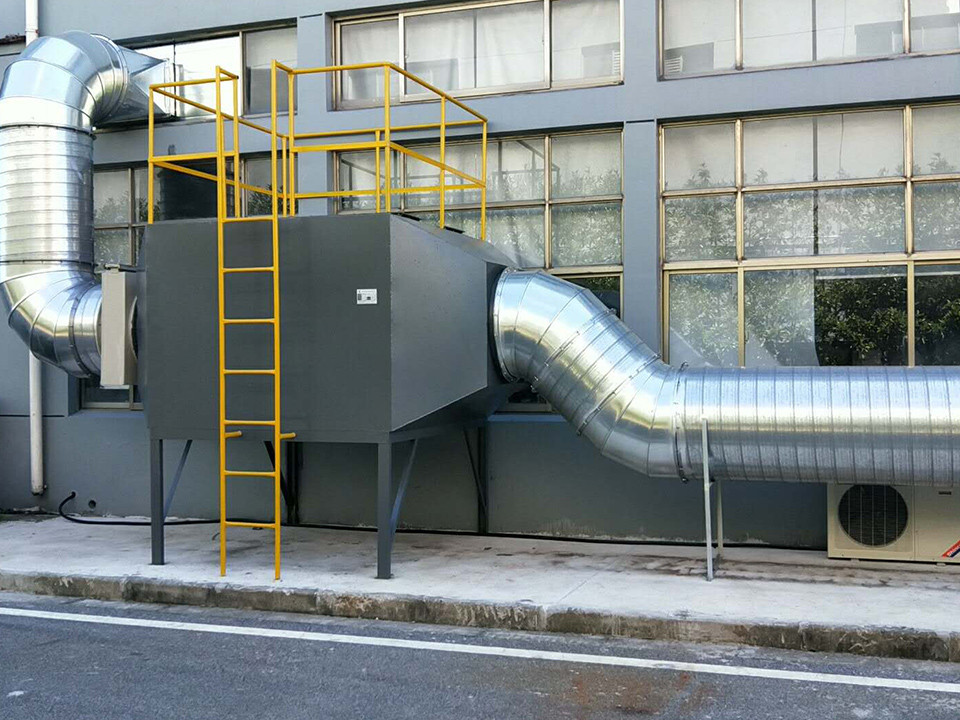
The exhaust gas is powered by the fan, and the negative pressure enters the activated carbon adsorpt...
Learn More
RTO (Regenerative Thermal Oxidizer, referred to as RTO), regenerative thermal oxidizer, is a kind of...
Learn More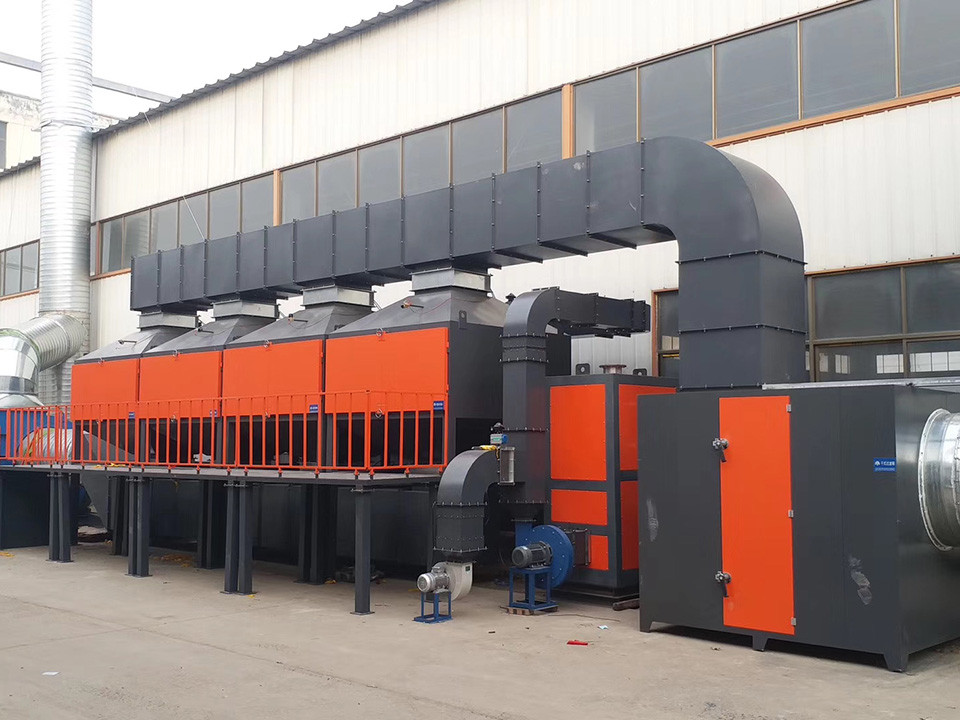
Under the action of the catalyst, the active ingredient of the catalyst can convert the organic matt...
Learn More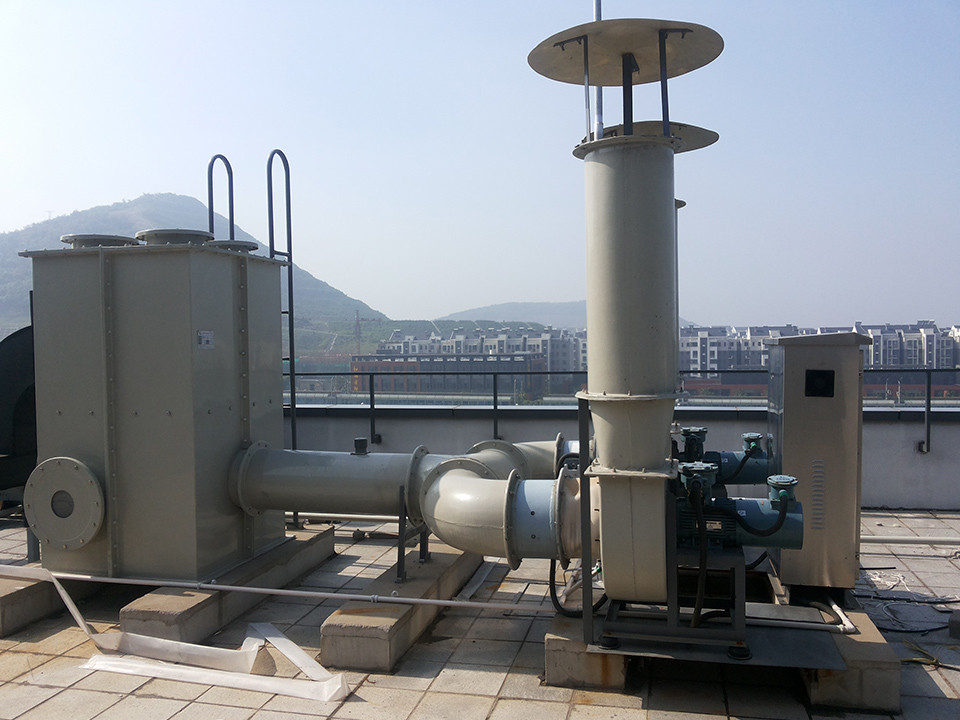
Activated carbon fiber organic waste gas purifier for in vitro regeneration carbon fiber organic was...
Learn More